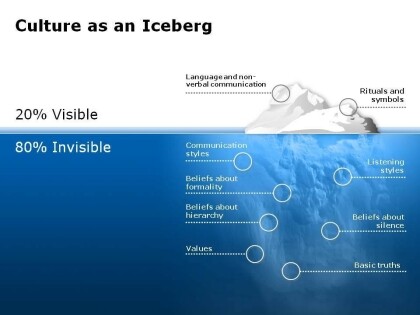Cross-cultural training activities by Joseba Arregi, Dmitrii Enygin, Venera Midova (best autobiographies to read .TXT) 📖

- Author: Joseba Arregi, Dmitrii Enygin, Venera Midova
Book online «Cross-cultural training activities by Joseba Arregi, Dmitrii Enygin, Venera Midova (best autobiographies to read .TXT) 📖». Author Joseba Arregi, Dmitrii Enygin, Venera Midova
Contents
Introduction 2
Training Exercise 1 – The culture onion 3
Training Exercise 2 - Cross-cultural checklist 5
Training Exercise 3 – Values at Work 8
Training Exercise 4 – Recognizing ineffective responses to cultural differences 12
Training Exercise 5 – What is wrong with stereotypes? 16
Training Exercise 6 – What do they need to know about us? 19
Training Exercise 7 – Facts, Attitudes and Behaviours 22
Training Exercise 8 – Communication types 24
Training Exercise 9 – Hofstede’s dimensions 28
Training Exercise 10 – Observing body language 33
Training Exercise 11 – Recognising culture shock 35
Training Exercise 12 – Culture shock checklist 38
Training Exercise 13 – Cross-cultural communication skills checklist 40
Training Exercise 14 – What makes a cross-culturally effective individual? 44
Training Exercise 15 – Use your RADAR 46
Introduction
This free Intercultural Training Exercise Pack offers easy-to-use intercultural and cultural awareness learning activities that can add a useful additional element to any in-house training courses you run, including management development programmes.
It contains 15 cultural awareness training activities which provide a ready-made source of suitable cross-cultural and cultural awareness training activities.
Training Exercise 1 – The culture onion
Key objectives
To enable learners to reflect on their own understanding of culture.
To introduce a model of culture and cultural influences.
To raise awareness of both visible and non-visible components of culture.
Time
10 to 15 minutes.
Materials
Five alternative definitions of culture handout
Background rationale
This is a simple exercise that explores ‘Why is culture important?’ and clarifies its visible and less visible elements.
Procedure
Provide the learner with the five alternative definitions of culture.
Ask the learner to reflect on which definition(s) he or she prefers. They can choose as many as they wish.
Ask the learner to indicate his or her preferred choice(s), giving reasons for the decision. Observations and suggestions for discussion
Many learners will opt for one or perhaps two of the statements, rather than seeing each one as part of a larger concept of culture. In fact, each of the descriptions reflects one aspect of culture. Discussion will benefit from using the Iceberg graphic (Introduced in Reading 1) to explore how each of the statements fit together. The aim is to form a more comprehensive understanding of culture as a framework of values, attitudes and behaviours.
Intercultural Training Exercise Pack
Five alternative definitions of culture handout
Below are five alternative definitions of cultures. Which definition(s) of culture do you prefer? You can choose as many as they wish.
Objective visible artefacts such as rituals, superstitions, heroes, myths, symbols and taboos.
Basic truths about identity and relationships, time and space, ways of thinking and learning, ways of working and organizing, and ways of communicating.
Ideals shared by group members to which strong emotions are attached.
The `right' and 'wrong' ways of doing things. The rules people live by in practice.
Subjective behavioural orientations to do things in one way, rather than another. They are most noticeable in relationship styles, thinking and learning styles, organization and work styles and communication styles.

Intercultural Training Exercise Pack
Training Exercise 2 - Cross-cultural checklist
Key objectives
To identify important cultural information that learners may wish to learn before they go overseas.
To illustrate the importance of having a framework for understanding the cultures that learners encounter.
Time
30 minutes
Materials
Cross-Cultural Checklist.
Background rationale
This activity is designed to help teach learners to identify what they know (and don’t know) about another culture or country. It is a practical activity designed for preparing for real-life cross-cultural encounters through an examination of both similarities and differences.
The purpose of this activity is not to come up with exact information about how to behave during cross-cultural encounters, but to identify some of the areas in which the learner needs to find out more.
Procedure
Give the learner a copy of the 'Cross-Cultural Checklist' and ask them to work through each question in turn.
Where the learner answers ‘Yes’, ask them to identify how they anticipate things to be different in the other culture.
Where the learner answers 'Don't Know', ask them to identify ways in which they might find out the answer to this question.
Observations and suggestions for discussion
The answers to each question are, of course, wholly dependent on the specific culture around which the checklist is undertaken and, of course, the cultural origin of the learners themselves. Not all the questions will be relevant in all situations.
Cross-Cultural Checklist
Think about another country or culture.
Complete the checklist answering Yes, No or Don’t Know to each question.
Where you answer Don’t Know, how will you find out about the answer to this cultural question?
Yes
No
Don’t Know
Non verbal communication
Should I expect differences in what is thought of as appropriate 'personal space'?
Should I anticipate differences in the way my counterparts use touch?
Is there anything particular I need to be careful about in giving or receiving business cards?
Should I avoid any particular gestures?
Should I expect differences in the level of acceptable eye contact?
Do I know what body language is taboo?
Yes
No
Don’t Know
Communication
Should I anticipate different attitudes about the acceptability of asking personal questions?
Should I anticipate different attitudes towards the acceptability of humour and emotions?
Should I anticipate different attitudes towards the acceptability of interrupting?
Do I know what type of argument is likely to be most persuasive?
Should I anticipate a different attitude towards addressing difficult issues directly?
Do I know what style of feedback is acceptable?
Should I anticipate different expectations about the expression of criticism?
Should I anticipate different expectations about the expression of anger?
Should I anticipate different expectations about the formality of feedback?
Do I know the range of ways in which disagreement is likely to be expressed?
Should I expect a different style of conflict resolution?
Should I anticipate different expectations about the use of silence?
Should I anticipate different communication styles to be in use?
Do I know when to use first names and surnames?
Do I know what professional titles to use?
Should I anticipate different attitudes towards small-talk?
Should I anticipate different attitudes towards the importance of saving face?
Should I anticipate a different use of tone or pitch when speaking?
Should I expect different attitudes towards displays of affection?
Key objectives
To enable learners to identify some of their own work-related values and attitudes.
To provide learners with a vocabulary and model with which to describe cultural influences on workplace behaviour.
Time
45 mins
Materials
Values at Work checklist
Background rationale
Cultural conflicts and misunderstandings can arise when individuals with opposing values come into contact.
The Values at Work checklist introduces an extensive range of dimensions along which work-related values vary, and explores the contrasting values that reside at each pole of each dimension.
This activity invites learners to reflect on some of their own cultural values, and asks them to explore the potential impact of cultural differences as they work in a new country or culture.
Procedure
Give a copy of the Values at Work checklist to the learner.
Allow a few minutes for the learner to complete the handout.
The learner will have probably identified important cultural differences between his or her own approach and that of another culture or country of interest. Discuss some of the following questions with the learner:
How might these differences become apparent in the working environment?
How might people from a different country or culture perceive your approach at work?
What challenge do these differences present?
In what ways might you adapt your behaviour to manage and overcome these cultural differences?
Research suggests that the way in which each of us thinks and acts at work can be influenced by the attitudes and values in the cultures to which we belong.
When we come into contact with people from different cultural backgrounds we can sometimes encounter workplace behaviour that does not match our assumptions and expectations. We can sometimes even misinterpret other people's workplace behaviour and make incorrect assumptions based on our own cultural background. This can result in confusion, misunderstandings and even conflict.
The checklist been designed to help you identify some of the ways in which your cultural background has had an impact on your workplace behaviour.
On the following pages you will find several statements asking about the way in which you prefer to communicate and the way in which you prefer to learn, think and apply knowledge.
Read each description in order.
Decide which behaviour is closest to your own. If you identify with both statements, choose the one you identify with more often, or in more situations.
Mark a score indicating how strongly you tend to exhibit this behaviour.
When you have completed this activity, decide how you think people in a different culture of interest to you would probably respond to the statements.
Where you have identified important cultural differences between you approach and that of people in the culture or country of interest to you, consider...
Are these differences important?
How might these differences become apparent in the working environment?
How might people from that country or culture perceive your approach?
What challenge do these differences present?
In what ways might you adapt your behaviour to manage and overcome these cultural differences?
Direct
I prefer people to go directly to the point and not to spend time beating around the bush.
Indirect
I think it is important to avoid conflict even if it means only hinting at difficult issues.
5
4
3
2
1
1
2
3
4
5
Being frank
It is important to be frank, open and honest at all times, even at the risk of causing others to lose face and experience shame.
Saving face
It is important that nothing I do causes others to lose face, even if this means that I have to find other ways of transmitting
important information.
5
4
3
2
1
1
2
3
4
5
Theory
I prefer to learn by receiving and absorbing information from an expert source
Practise
I prefer to learn by exploring, practising and experimenting with new ideas.
5
4
3
2
1
1
2
3
4
5
Deal
When I have a job to do, I prefer to focus on the task: walking straight into the situation, sorting things out and moving on.
Relationship
When I have a job to do, I prefer to focus on the people: spending time getting to know those I will work with.
5
4
3
2
1
1
2
3
4
5
Prompt
I prefer people to stick strictly to measurable and structured deadlines. Being on time is the key to efficiency.
Flexible
I prefer people to take a flexible approach to timekeeping. Being flexible about deadlines is the key to efficiency.
5
4
3
2
1
1
2
3
4
5
Teacher
I prefer to give out precise and detailed instructions to people I work with. It is important that people do what they are told.
Facilitator
I prefer to guide people towards making as many of their own decisions as possible. It is important people take the initiative at
work.
5
4
3
2
1
1
2
3
4
5
Informal
I prefer to talk with people in an informal way, regardless of who they are or what position they hold.
Formal
I prefer to show the proper level of respect for position and status by using formal titles, surnames or polite forms of address.
5
4
3
2
1
1
2
3
4
5
Logic
I prefer to stick to logic and facts when I am arguing a case. In business, emotions should be controlled as much as possible.
Feeling
I prefer to display emotions and warmth when I am arguing a case. In business, emotions should be listened to and
respected.
5
4
3
2
1
1
2
3
4
5
 The desire to acquire knowledge about the surrounding world and human society is quite natural and understandable for a person. Life is so developed that an uneducated person will never occupy a high position in any field. Humanity in its mass, and each person individually, develops objectively, regardless of certain life circumstances and obstacles, but with different intensity. The speed of development depends on the quality of training.
The desire to acquire knowledge about the surrounding world and human society is quite natural and understandable for a person. Life is so developed that an uneducated person will never occupy a high position in any field. Humanity in its mass, and each person individually, develops objectively, regardless of certain life circumstances and obstacles, but with different intensity. The speed of development depends on the quality of training.




Comments (0)